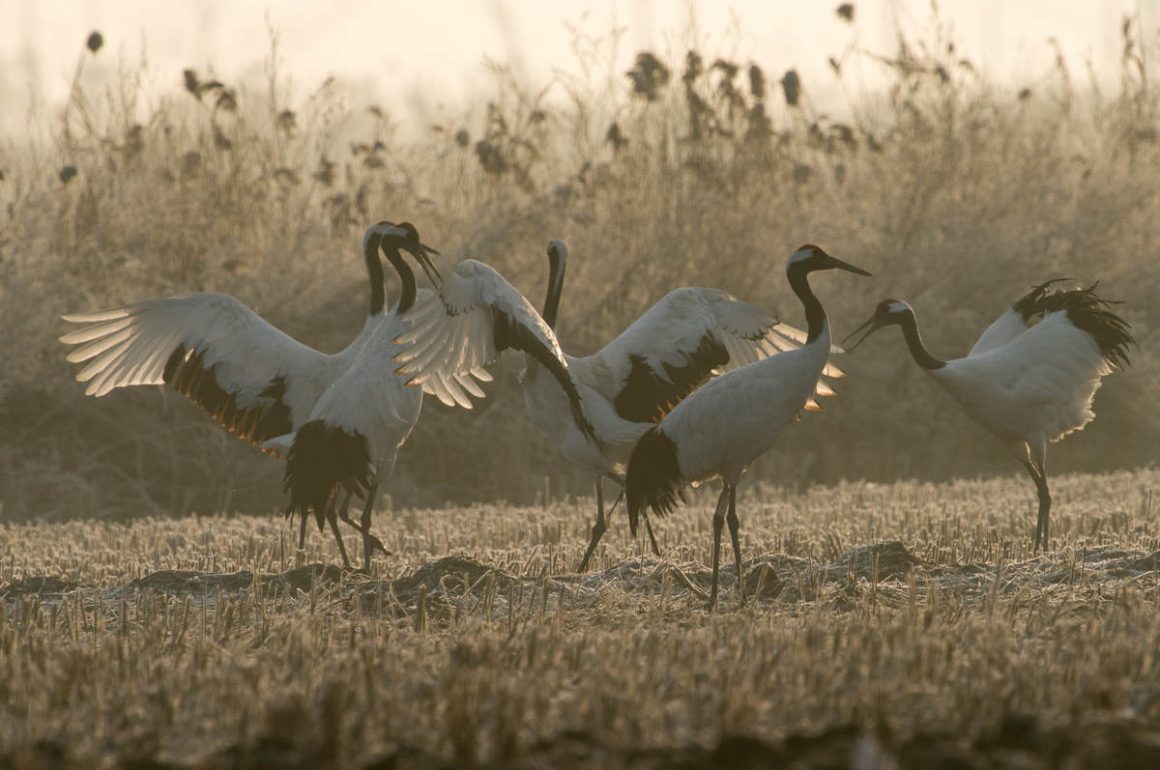
From my home in Shanghai, it is about a four-hour drive to the North to Yancheng, a place to look for Red-crowned Cranes in winter. While these birds are very much liked by Chinese birders, the species could unfortunately not be named the National Bird of China as the Latin species name of the bird is Grus Japonicus. Frankly, if the name of the Bald Eagle was North Korean Eagle (Haliaeetus coreaseptentrionalis?), it would not be the national bird of the USA either.
Based on my photos, I would have to conclude that the Red-crowned Crane prefers black-and-white photography. Incompetent photographers can always blame the bird.
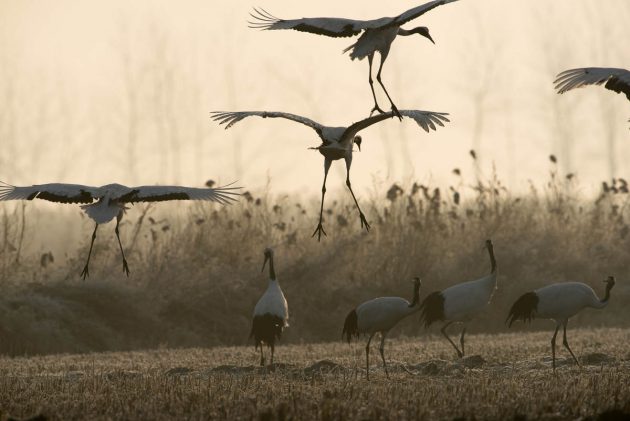
This is kind of the “poster child” crane – or as eBird states, “the crane most commonly depicted in Chinese and Japanese paintings and ceramics”.
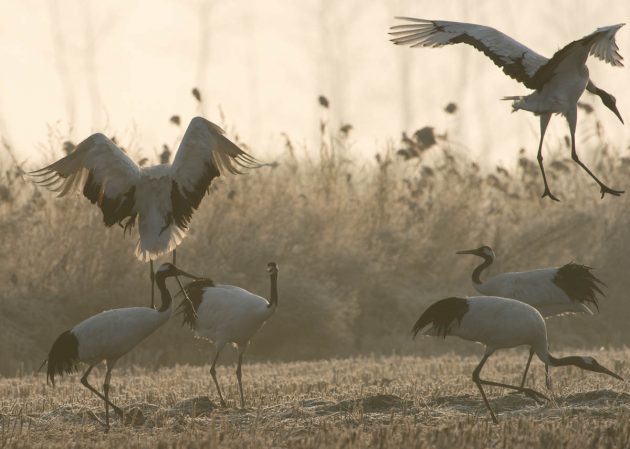
The Red-crowned Crane is listed as Vulnerable even though adult birds have no natural predators, but of course, there are birds and mammals eating their eggs and small nestlings.
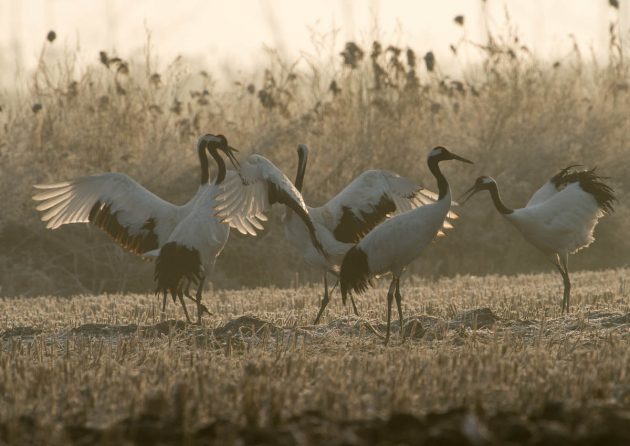
According to Wikipedia, these birds are good at multitasking, being “in some parts of its range … known as a symbol of luck, longevity, and fidelity”.
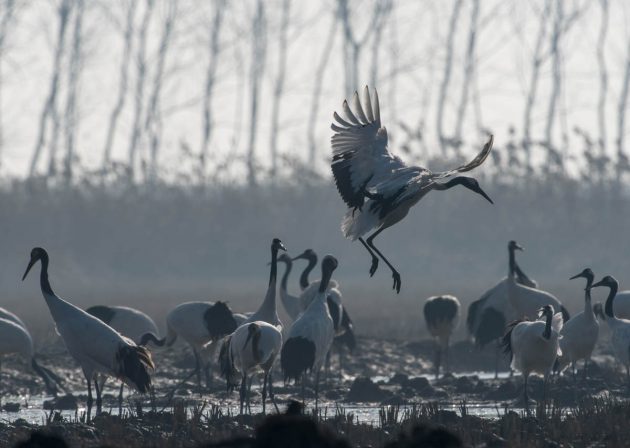
As in humans, “the social implications of dancing [among the cranes] are complex in meaning” (source).
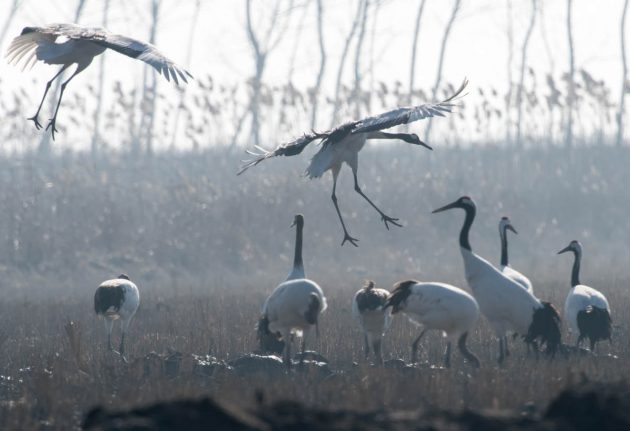
There is a great song by The Chills titled “Complex“. Great link, right?
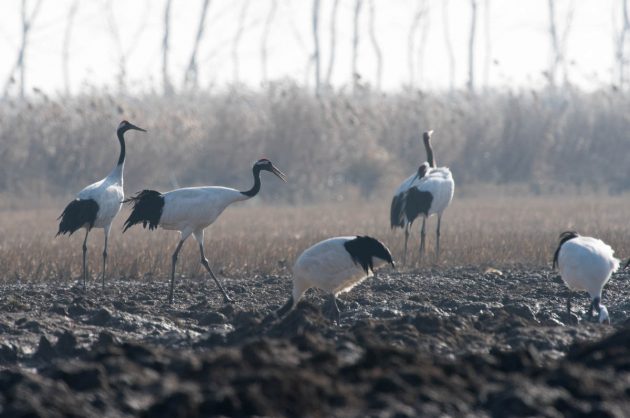
The standard rationale – which I always find a bit unconvincing as it does not seem to explain things really – is that the duets of Red-crowned Crane pairs are “helping to establish formation and maintenance of the pair bond” (Wikipedia).
(I remember I once read in a book – probably by an ornithologist – that he stated that he was going to write a postcard to his wife or girlfriend in order to “strengthen their pair bond”. Sorry, forgot the exact source)
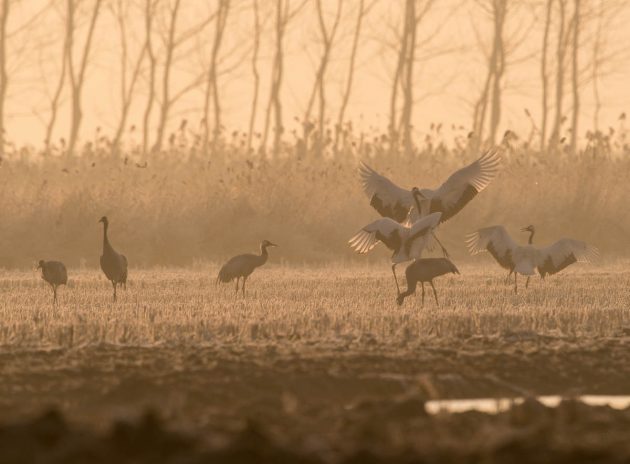
Sometimes, looking at the titles of scientific papers makes me feel a bit uneasy. Take “A multiscale approach to identifying spatiotemporal pattern of habitat selection for red-crowned cranes”. I guess it is about how cranes decide where to stay. But maybe this is too simple a title given that the paper has 13 authors.
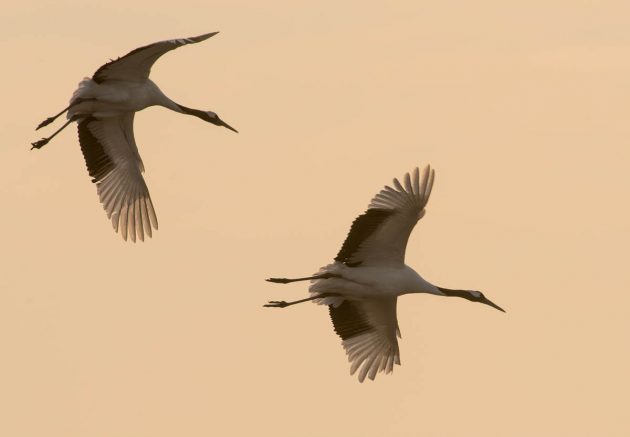
On the other hand, if a paper titled “The fecal virome of red-crowned cranes” has 17 authors, then 13 for the first paper sounds quite reasonable.
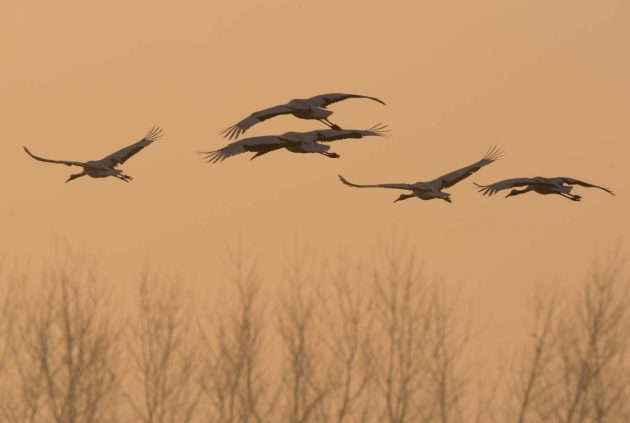
If you ever wanted to know more about the stomach of Chinese Grosbeaks, here is a paper for you. Not to give the whole content away, but one of the highlights certainly is the statement that the “proventriculus glands were constituted by many round or elliptical glandular lobules”.
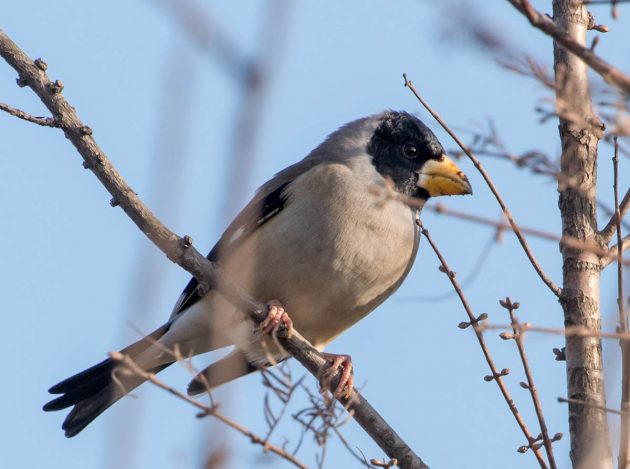
Apparently, Crested Mynas frequently use snake slough (the skin shed by snakes) as part of their nest-building materials. It is not quite clear why they do this as it apparently does not affect breeding success. Despite the fact that it does not seem to work, the authors still speculate that “snake slough in crested myna nests may serve to reduce nest predation, improve the immunity of nestlings or serve as a post-mating sexual signal eliciting differential reproductive investment in mates” before finishing with the classic remark “these speculations require further investigation”.
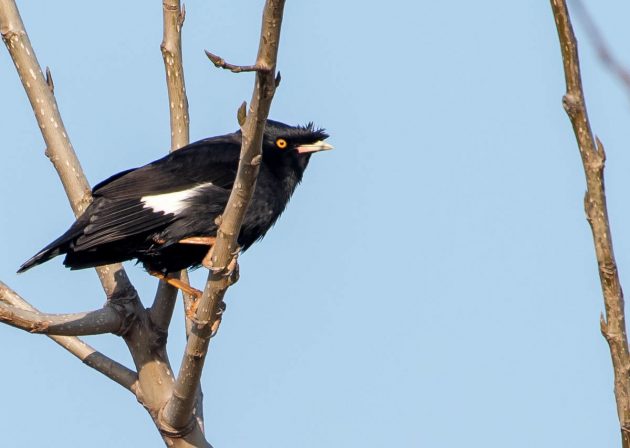
Many men like toys – the more technical and the more expensive, the better. Ideally, however, you should either find somebody else to pay for these toys or at least convince your wife that these toys are not toys but highly useful. It seems that two Italian men have found a way to do both. They have written a paper on the “Feasibility of counting breeding Pied Avocets and Black-winged Stilts using drones”.
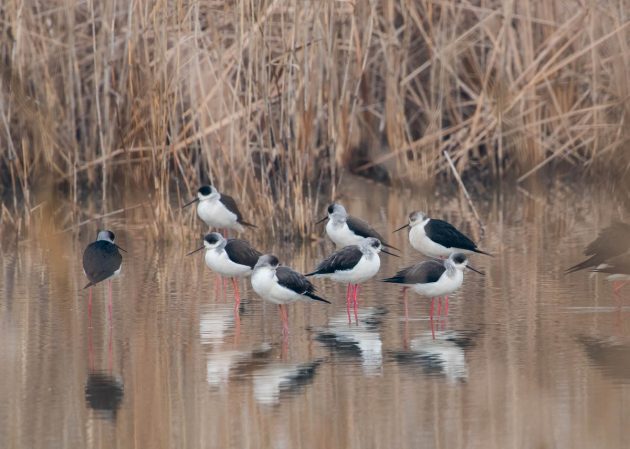
It seems to work, actually – though about 20 percent of breeding pairs are being missed by drone surveys.
The Oriental Stork is endangered, with around 3000 individuals left. Threats include aquaculture (source) and the fact that the stupid birds do not understand the concept of boundaries (source), instead just going where they like it best. If everybody did this, the result would be chaos.
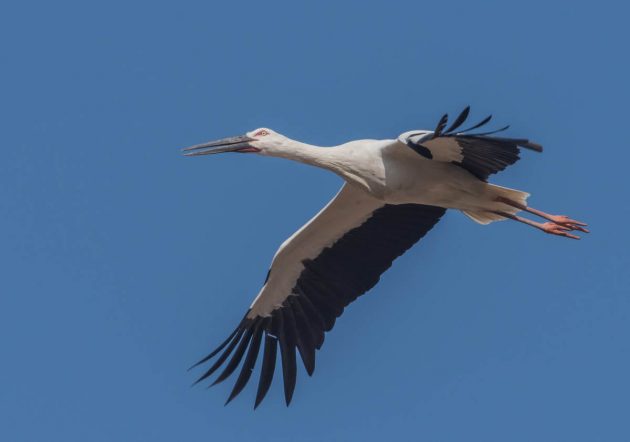
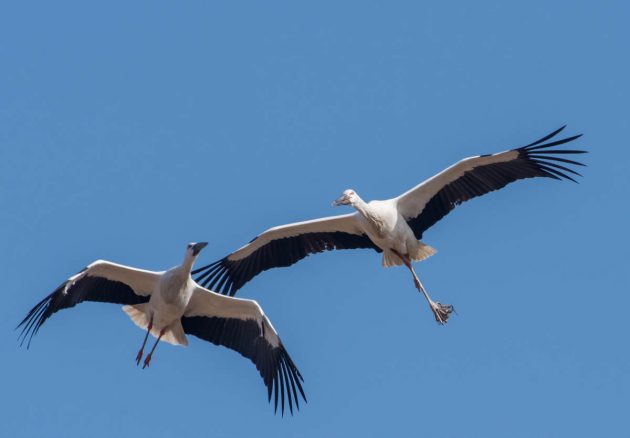
In humans, personality traits such as boldness versus shyness partly determine whether you end up being rich and popular or poor and lonely (ok, that is a bit of a simplification, but probably broadly true). In Daurian Redstarts, personality traits (specifically, whether a bird is shy or bold) partly determine how good an individual is in rejecting cuckoo eggs in its nest. Apparently, birds that are fast in exploring new things – bold birds – are better at rejecting parasitic eggs (source).
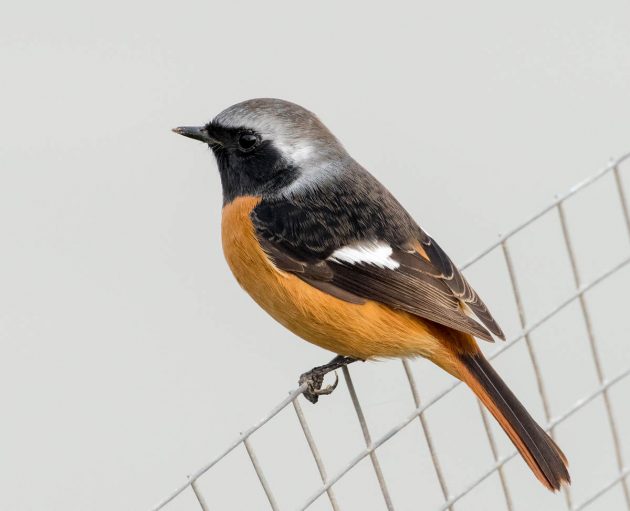
Another study related to brood parasitism – this one on Vinous-throated Parrotbills – showed that in this species, both males and females reject parasitic eggs, not just the females. A nice example of gender equality of sorts. Unfortunately, the abstract ends with a rather bland “further studies are still needed to confirm the egg recognition mechanism in this species”.
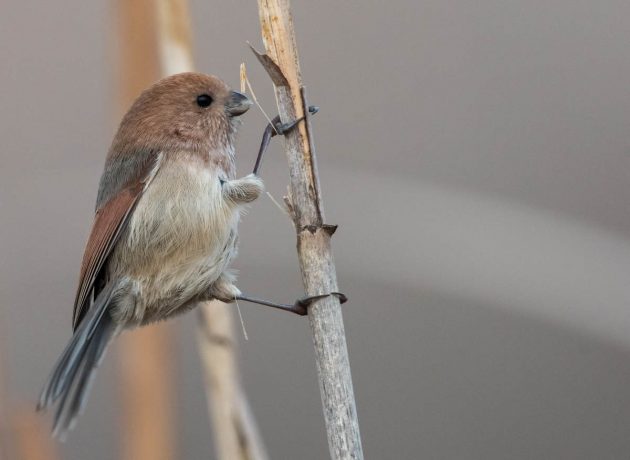
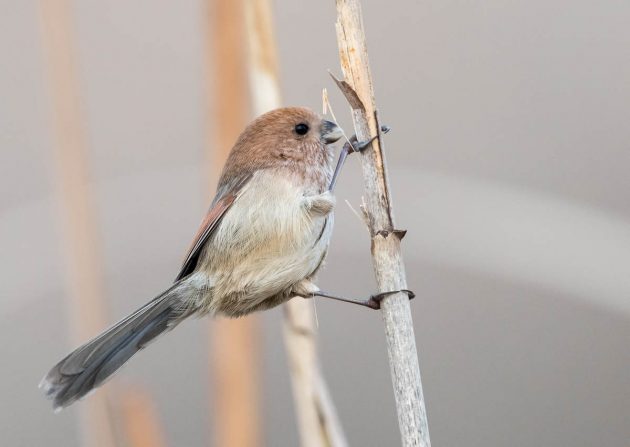
The Rustic Bunting is listed as Vulnerable – and there are ominously-titled papers such as “The next common and widespread bunting to go? Global population decline in the Rustic Bunting Emberiza rustica“.
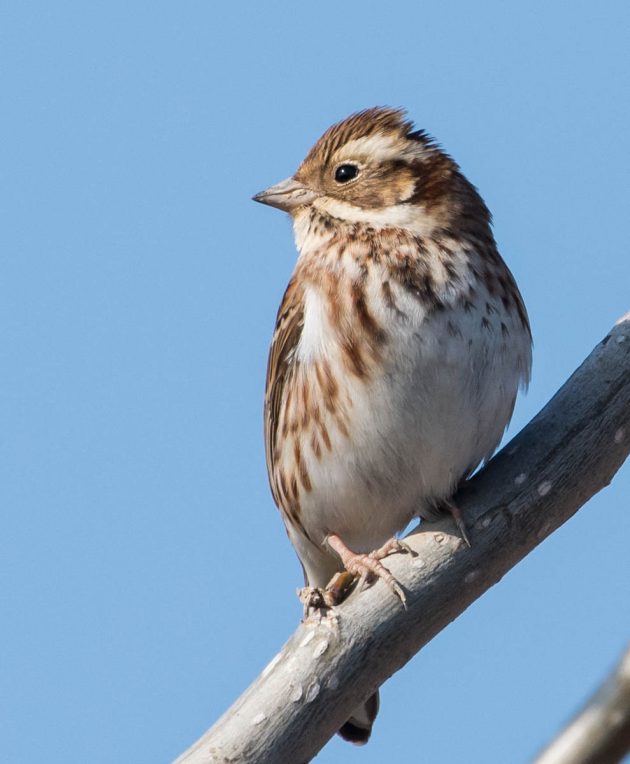
Fortunately, the Little Bunting – which looks a bit like a sanitized and, ahem, less rustic version of the Rustic Bunting – does not seem to be threatened.
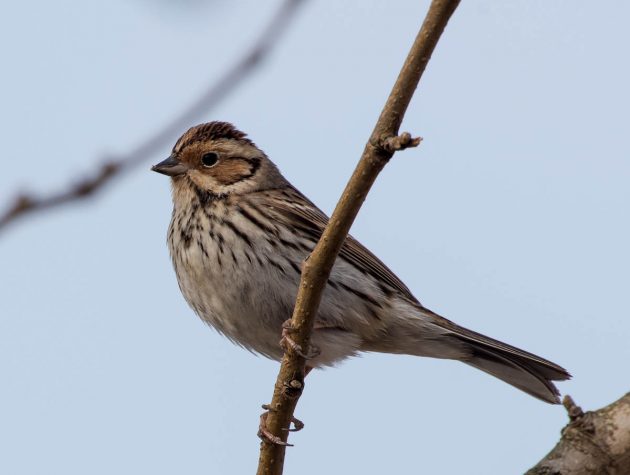
Apart from the crane, some Long-eared Owls were the highlight of this short trip for me.
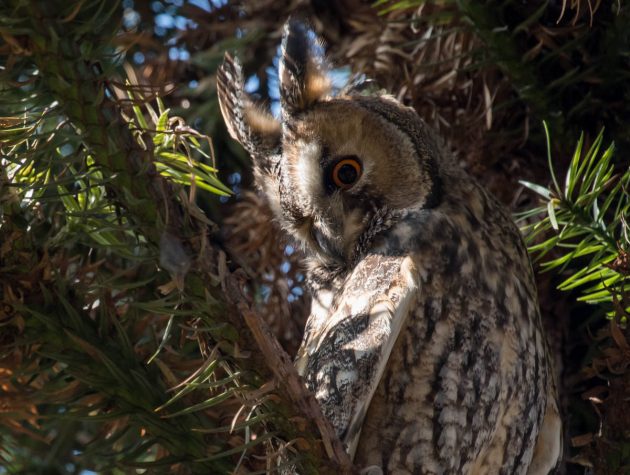
Even though I am pretty sure eyes like these cannot be real and have been taken from some oversized teddy bears.
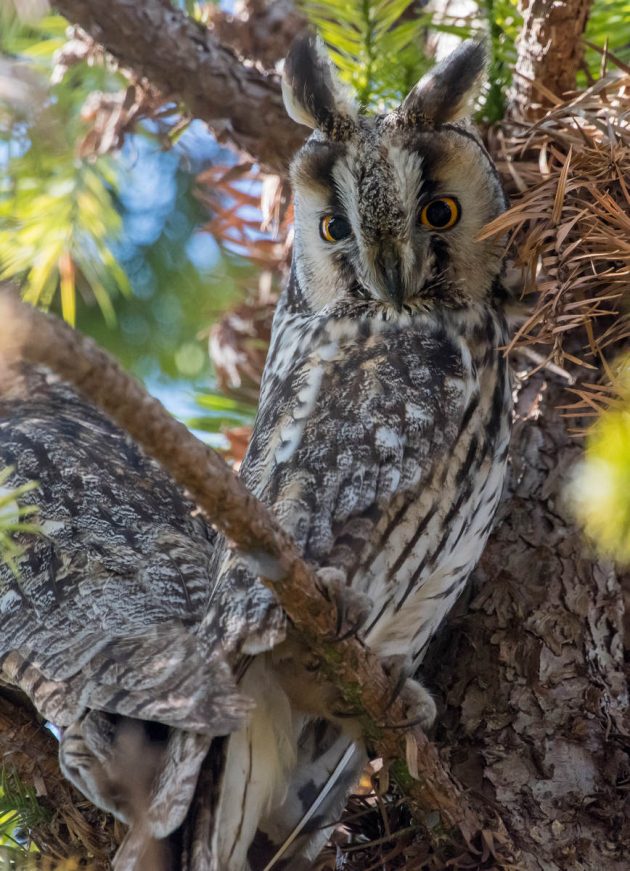
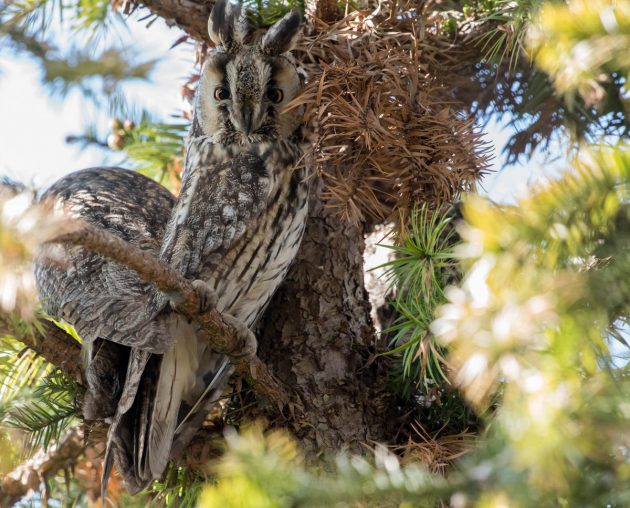
I recently watched an online advertisement for The Economist. The punchline went something like “The really important people read The Economist because they do not have much time”. Maybe they even said that the really really important people only read the first few sections of The Economist.
If you are a really really important person in the area of Long-eared Owl diet research, instead of looking at hundreds of individual papers, I recommend reading the paper “Synthesis of 312 Studies on the Diet of the Long-Eared Owl Asio otus“.
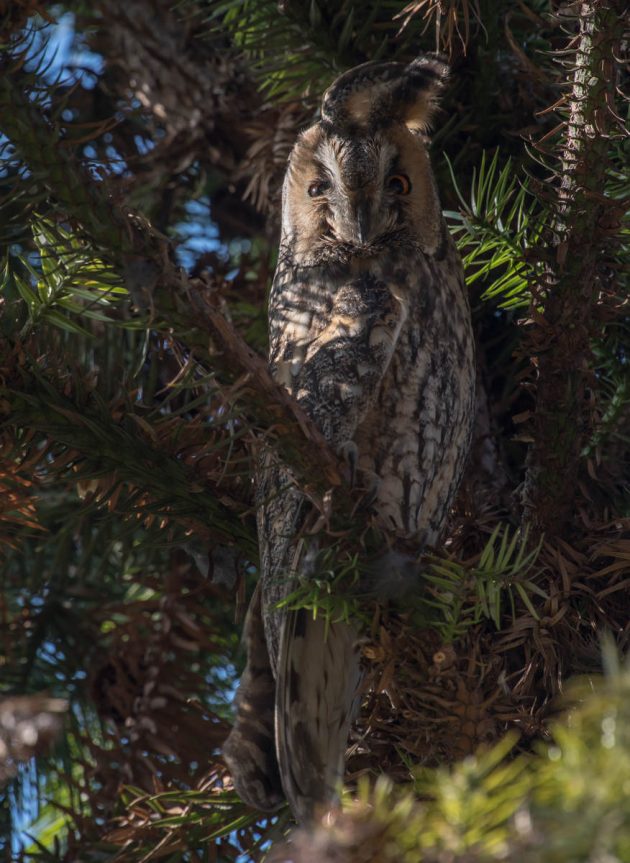
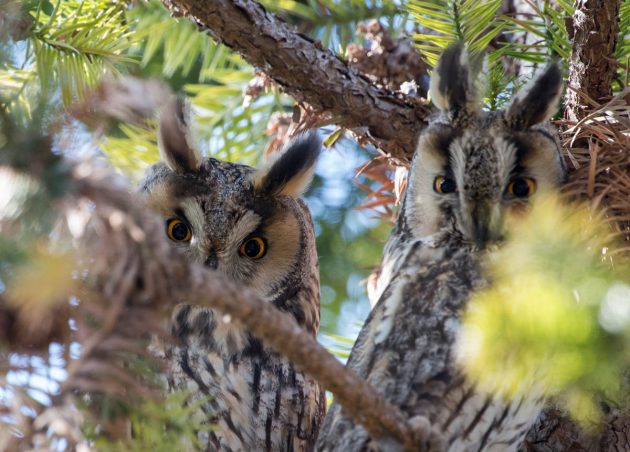
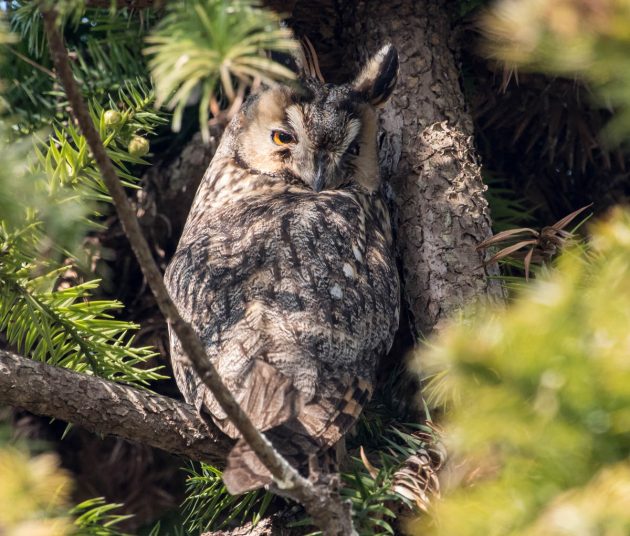
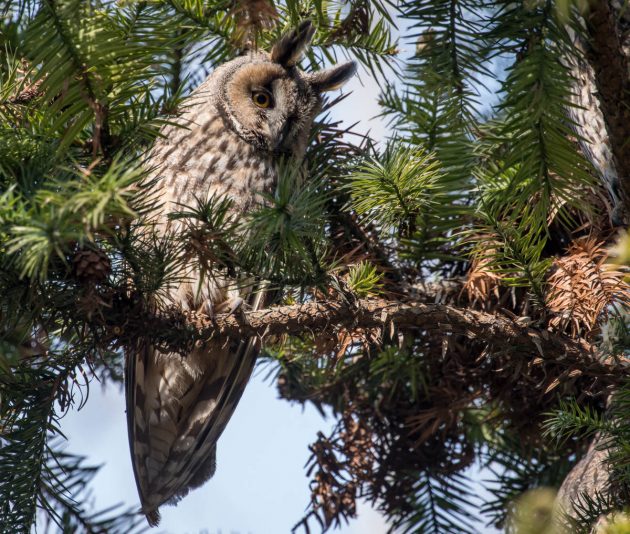











Leave a Comment